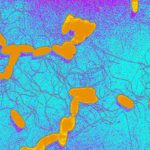Link to Pubmed [PMID] – 24194921
Link to DOI – e7833610.1371/journal.pone.0078336
PLoS One 2013 ; 8(10): e78336
Detection of meningococcal carriers is key to understanding the epidemiology of Neisseria meningitidis, yet no gold standard has been established. Here, we directly compare two methods for collecting pharyngeal swabs to identify meningococcal carriers.We conducted cross-sectional surveys of schoolchildren at multiple sites in Africa to compare swabbing the posterior pharynx behind the uvula (U) to swabbing the posterior pharynx behind the uvula plus one tonsil (T). Swabs were cultured immediately and analyzed using molecular methods.One thousand and six paired swab samples collected from schoolchildren in four countries were analyzed. Prevalence of meningococcal carriage was 6.9% (95% CI: 5.4-8.6%) based on the results from both swabs, but the observed prevalence was lower based on one swab type alone. Prevalence based on the T swab or the U swab alone was similar (5.2% (95% CI: 3.8-6.7%) versus 4.9% (95% CI: 3.6-6.4%) respectively (p=0.6)). The concordance between the two methods was 96.3% and the kappa was 0.61 (95% CI: 0.50-0.73), indicating good agreement.These two commonly used methods for collecting pharyngeal swabs provide consistent estimates of the prevalence of carriage, but both methods misclassified carriers to some degree, leading to underestimates of the prevalence.

